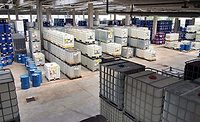Rebuilding a Wonder of the Medieval World




AkzoNobel’s Decorative Paints business is helping to recreate one of the Seven Wonders of the Medieval World – the Porcelain Tower of Nanjing in China. Built during the Ming Dynasty, the original pagoda was mostly destroyed in the 19th century. But a highly anticipated construction project is underway that will revive the cultural icon, with AkzoNobel making a key contribution through its color expertise.
Phase one involves constructing the main Buddhist temple, featuring the distinctive porcelain pagoda. After being selected for the prestigious project, experts from AkzoNobel carefully selected a light yellow shade for the upcoming painting work on the temple’s porcelain walls. This color reflects the building’s heritage and symbolizes the regaining of former glories. “We are honored to be involved in the reconstruction of the Porcelain Tower of Nanjing,” said Ruud Joosten, AkzoNobel’s Executive Committee member responsible for Decorative Paints. “We are keenly aware of the importance of preserving cultural heritage, as it’s one of the main pillars of our Human Cities initiative. This project is therefore a wonderful example of how we are striving to help make cities around the world more vibrant and liveable.”
Added Lin Liangqi, President of AkzoNobel China and Managing Director of Decorative Paints China and North Asia, “The Porcelain Tower of Nanjing was regarded as a national treasure and it remains as culturally significant now as it was hundreds of years ago.”
Nearly 20,000 kilograms of Dulux Pro Stucco – an acrylate, copolymer-based waterborne texture paint – has been used to coat 8,000 square meters of porcelain walls. The product offers outstanding weather resistance, adhesion and color versatility and has also been used in other high-profile cultural restoration projects, such as WuHan Gemdale, West River Moon in Xi’an, and Jade City in XinJiang Province.
The current construction project, known as the Nanjing Porcelain Tower Relics Park, will transform the original site into a cultural attraction for the city.
By AkzoNobel, Amsterdam, the Netherlands
Looking for a reprint of this article?
From high-res PDFs to custom plaques, order your copy today!









